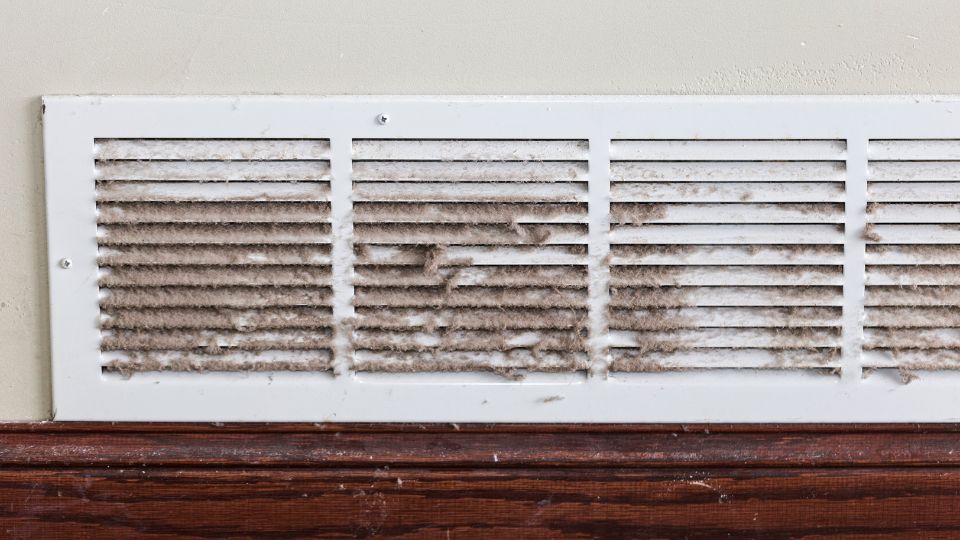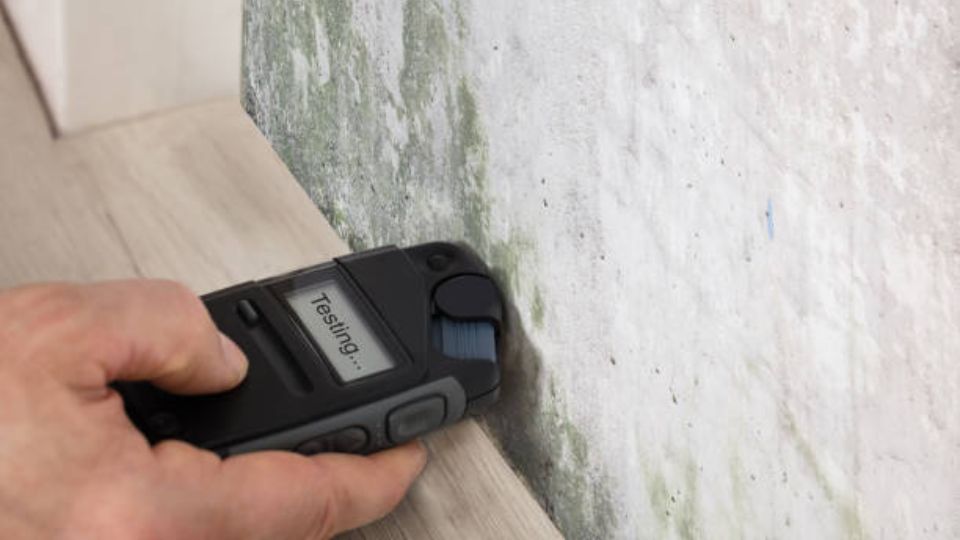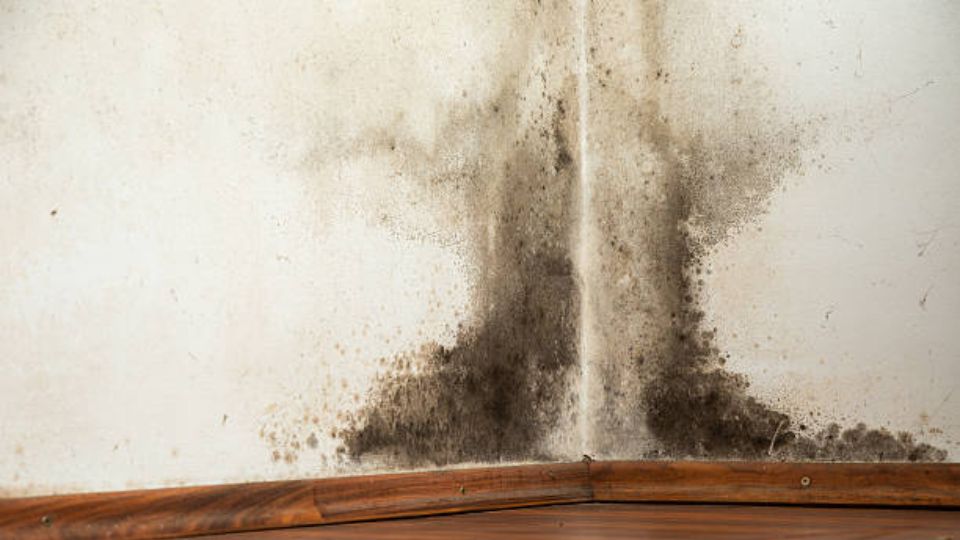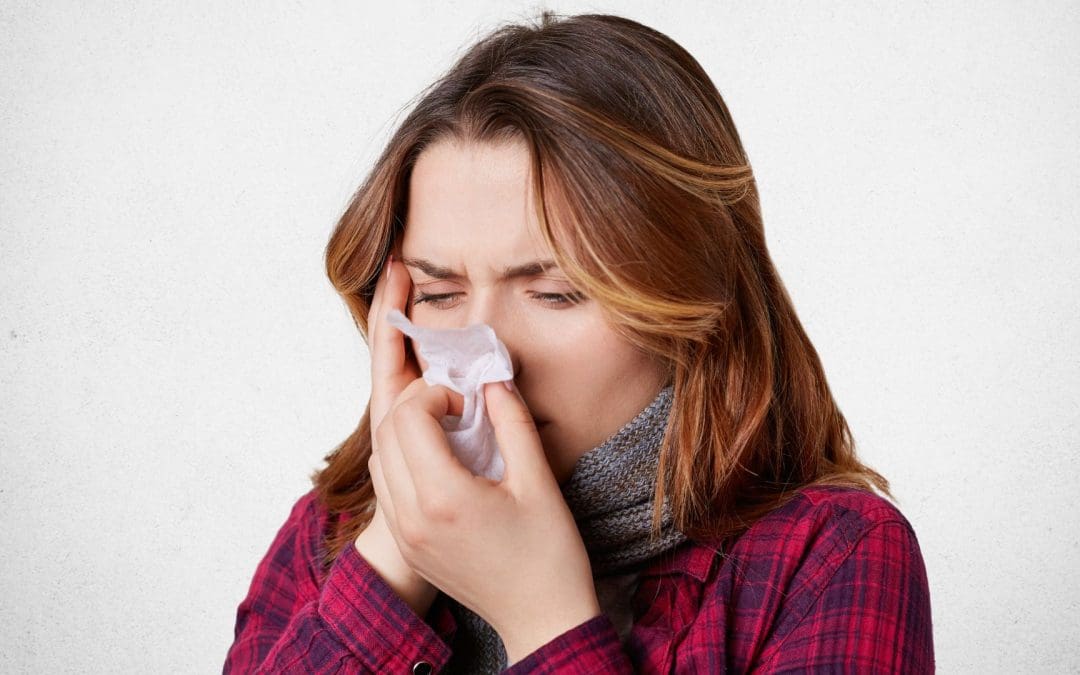
by Mold-B-Gone | Aug 9, 2024 | Mold Inspection
Regular mold inspections are your best weapon for combating frustrating and health-threatening mold-related issues. Mold-B-Gone Remediation understands the importance of regular mold inspections and is happy to educate.
Mold-Related Health Risks
Asking yourself why mold inspection is crucial for healthy home environments is the first step. Without regular mold inspections, you’re putting your family’s financial and physical health at risk. Especially for those with asthma, respiratory problems, and allergies, mold can prove incredibly harmful. Even for those who do not struggle with these ailments, mold buildup can cause allergic reactions, respiratory problems, skin irritation, and serious infections.
Mold Can Damage Your Property
In terms of financial health, the benefits of regular mold inspections protect your home or business from rot and other mold-related impact that causes damage to drywall, insulation, wood, and other important structural elements. If you fail to handle these problems in a timely fashion, they can lead to costly repairs. In extreme cases, a hazardous mold buildup can even get your property in trouble with the health department.
How Do Mold Inspections Work?
Mold inspections are simple and efficient. Mold removal specialists will thoroughly examine your property to determine any potential mold growth or symptoms. They will perform a visual inspection, a moisture assessment, air-quality testing, and surface sampling to get the most in-depth results possible. Through this comprehensive method, they can effectively safeguard your home against mold growth and prevent future mold growth issues.
Benefits of Frequent Mold Inspections
Beyond understanding reasons why mold inspection is crucial for a healthy home, it’s important to understand the benefits it provides in the long run. There’s a wide range of valuable benefits that come packed in with mold inspection services. You’ll gain the ability to live happily and healthily in your home while saving on energy costs that can arise when your property develops a mold problem. The improved air quality you’ll experience alone will help you breathe easily. Take advantage of early detection and prevention to avoid headache-inducing mold problems.
Read More: What Happens During A Mold Inspection?
Mold Inspection Timelines
The age of your home, the mold history of your property, and local climate conditions will determine your property’s mold inspection timeline. Whenever you experience water damage or notice a sudden musty odor you should get a mold inspector to your property ASAP to prevent potential mold damage.
Hiring the Right Mold Cleaning and Inspection Service
Finding high-quality mold inspection services in Atlanta is your duty as a responsible homeowner. Mold-B-Gone can help you determine when and how often you need to inspect your home for signs of mold-related issues. Contact our team to get the process started today.

by Mold-B-Gone | Dec 13, 2022 | Mold and Infants, Mold Facts, Mold Inspection
Duct cleaning is an often overlooked but essential part of home maintenance. Many people don’t think about it until they start experiencing problems like allergies, asthma, or even higher energy bills.
Duct cleaning has many benefits because it not only improves air quality but also helps reduce energy costs.
Read more: Top 15 Reasons To Clean Your Ducts!
If you’re unsure whether or not your air ducts need to be cleaned, read on for the signs that you should call in the professionals!
1) Dusty Grills
The grills are the first place to look for signs of dirt. If you can easily spot dust and debris on the grills, it indicates that your air ducts need cleaning. Professionals use tools like high-powered vacuums and brushes to remove the dust build-up and can access tight spaces.
2) Mold Growth
If you notice that your air ducts have a musty smell or signs of visible mold growth, this indicates that the airflow in your home has been compromised and should be addressed immediately. Cleaning your air ducts will help reduce any mold problems and improve the overall quality of indoor air.
3) High Humidity
High humidity levels in your home can worsen asthma and allergy symptoms. It can also lead to mold growth, spreading through the air ducts if not kept in check. If you notice high humidity levels in your home, it might indicate that your ducts need to be cleaned. Humidity causes problems inside the ducts, leading to dust and debris build-up. This build-up creates an ideal environment for mold growth and can cause a musty smell in your home that’s hard to ignore.
4) The Air Filters Are Dirty
The air filters in your HVAC system should be changed every three months or so, depending on the type of filter and how often you use it. If these become clogged with dirt and debris, it can lead to poor airflow from the registers. This indicates that your ducts have built up dust and dirt and should be cleaned.
5) Mold Is Present
If you notice any visual or odor of mold, your ducts are likely harboring the spores. The air circulating through your home picks up these spores and spreads them throughout the system. This can cause problems for anyone in the home who has allergies or asthma. Contact a professional to have the ducts cleaned and any mold removed.
6) Unusual Sounds Coming From Your System
If your vent system is making odd noises, like rattling or squeaking, it likely means a blockage somewhere in the line. This could be due to debris buildup, which could lead to an increase in airflow resistance. This can cause high air pressure and make strange noises you may hear. Have your vents inspected if you hear any odd sounds coming from them?
7) Higher Energy Bills
When dust, dirt, and other particles build up in ducts, the system has to work harder to circulate air throughout the house. This requires more energy and can lead to an increase in energy costs. The U.S Department of Energy recommends regularly cleaning and inspecting air ducts and other parts of your HVAC system to reduce overall energy consumption.
Call Mold-B-Gone for the best duct cleaning in Atlanta. We can help keep your air clean and your home safe.

by Mold-B-Gone | Dec 6, 2022 | Mold Facts, Mold Inspection
Mold can be a severe issue in any home. Not only is it unsightly, but it can also cause health problems for you and your family. If you have mold in your home, it’s essential to test for it as soon as possible.
Some signs that indicate the presence of mold in your home include a musty smell, visible growth on walls and ceilings, and water damage.
Read more: How Do I Know If Mold Is Growing In My Basement?
There are several different ways to test for mold in your home. We will discuss how to test for mold and what to do if you have a problem with mold in your home.
1. Determine If You Have a Mold Problem
Mold growth happens when there is an excess of moisture in the air or on surfaces. A dripping roof, plumbing leaks, and condensation can lead to mold growth. Inspect your home’s walls, ceilings, windowsills, and floors for discoloration or any visible signs of mold. If you do see signs of it, or if your home smells musty, it is time to inspect further.
2. Collect Samples for Testing
Experts in mold testing use different methods to find and collect samples. These include:
a) Air Sampling:
This involves collecting a sample of air and sending it to the laboratory for testing. The air sampling procedure can be used in different house parts, such as near HVAC ducts or other areas where mold may be present.
b) Swab Sampling:
Swab samples are taken by rubbing a sterile swab on non-porous surfaces, such as walls or floors. The sample can then be sent to the laboratory for further testing.
c) Bulk Sampling:
This involves collecting a physical sample of the material that may be contaminated with mold and sending it to the laboratory for analysis.
3. Test the Samples for Mold
Testing mold samples requires specialized kits, or you can send the samples to a laboratory for analysis. Be sure to follow your chosen method’s instructions carefully and note any information unique to your particular situation.
4. Interpret the Test Results
Mold growth found in your home should be tested and identified to determine the best course of action for remediation. It’s important to understand that a professional mold inspector or testing company can help you interpret the results so you can make informed decisions on how to address the problem.
The test kits available at hardware stores include easy-to-follow instructions, but these tests need to assess the type or amount of mold growth accurately. For this, a professional lab will be necessary to provide a detailed report of what types of molds were found and the levels they were present.
5. Take Action Based on the Results
Mold remediation involves both the removal of existing mold growth and the prevention of future mold growth. If the test results show high mold levels, it is essential to take action quickly. Mold can cause health problems, such as allergies and asthma, so it should be removed immediately.
6. Maintain Your Mold-Free Environment
Preventive measures are the best way to keep your home free of mold. Take steps to reduce humidity in areas prone to moisture, such as bathrooms and kitchens, by using exhaust fans or dehumidifiers and ensuring that these areas are well-ventilated.
Call Mold-B-Gone for expert mold inspection in Atlanta. We are a certified mold remediation company with the experience, knowledge, and technology to diagnose and remove mold from your home or office accurately.

by Mold-B-Gone | Nov 15, 2022 | Black Mold, Mold and Infants, Mold Inspection
Mold can be a severe problem in homes and businesses. Not only is the mold unsightly, but it can cause health problems for people who breathe in the spores.
One of the dangerous types of mold is black mold. Also professionally known as Stachybotrys chartarum, black mold produces mycotoxins, which can cause serious health issues.
Black mold grows in damp, humid environments and can appear as greenish-black or black spots.
Read more: What Causes Black Mold?
It’s essential to understand how fast black mold grows on concrete and other surfaces so that you take the necessary steps to prevent it from taking hold in your home or business. Black mold usually starts growing in ideal conditions in 24 to 48 hours. We will also discuss health issues with black mold and factors that influence mold growth in your home or business.
What Are the Health Issues With Black Mold?
Black mold, known as Stachybotrys chartarum or Stachybotrys atra, is a fungus that can cause serious health issues if left untreated. These include:
- Respiratory problems, including coughing and sneezing, asthma attacks, and chronic sinus infections.
- Eye irritation, such as burning eyes or watery eyes.
- Skin problems, with redness and itching being the most common symptoms.
- Various neurological issues, such as headaches and fatigue.
- In extreme cases, black mold can cause nausea and vomiting.
Patients with weakened immune systems, as well as infants, children, and older adults, are especially vulnerable to its effects.
Factors That Affect How Fast Black Mold Grows
Mold only needs a few essential components to grow and thrive: moisture, warmth, food source, and oxygen. Here are the factors that can affect how quickly black mold grows:
Humidity:
Mold will grow faster in moist, humid environments. High relative humidity (RH) means more moisture is available for the mold to feed off, causing it to grow faster. Places like bathrooms and basements are typically more humid, making them ideal environments for mold growth.
Temperature:
Warm temperatures help black mold reproduce quickly. The warmer the environment, the faster it will grow. Locations with higher temperatures, such as attics, will experience faster mold growth than rooms with lower temperatures.
Food Source:
Different molds require different food sources to survive. Black mold grows on organic materials like wood and paper high in cellulose. To grow faster, it needs a consistent source of these materials.
Oxygen:
Mold needs oxygen to survive and reproduce. Without it, the mold won’t be able to grow. Black mold can also reproduce anaerobically (without oxygen) in small amounts, substantially slowing its growth.
What Should You Do While Waiting for Mold Remediation Services?
If you have noticed telltale signs of black mold in your homes, such as discoloration, musty smells, and even health issues, you may:
a) Seal off the area until a mold remediation service arrives
b) Contact your insurer and file a claim
c) Increase ventilation in the affected rooms to reduce moisture levels
d) Clean up any remaining water or spills and all porous materials (like carpeting and drywall).
Contact Mold-B-Gone for expert mold inspection in Atlanta. We have a team of certified professionals available to answer any questions about mold growth, particularly black mold.

by Mold-B-Gone | Oct 19, 2022 | Basement Mold, Mold and Infants, Mold Inspection
Mold can be a severe issue. It can cause health problems and damage to your property.
Basements are the perfect breeding ground for mold. The combination of darkness, moisture, and lack of ventilation creates the perfect environment for mold to grow.
Mold produces allergens that can cause respiratory problems, skin irritation, and other health issues. In some cases, mold can even produce toxins that can harm your health.
Hence, it is essential to call mold remediation for your basement as soon as you see any signs of mold.
Read more: Health Benefits of Mold Remediation
Experts will take care of the problem quickly and efficiently to ensure your home’s safety and integrity.
We will explain what causes mold, its health risks, and how our mold remediation services can help you get rid of it for good.
What Are the Causes of Mold Growth in Basements?
1) Poor ventilation – Moisture-laden air can condense on cold surfaces, leading to mold growth.
2) Water leaks – Leaks from pipes, foundation cracks, or other sources can introduce moisture into the basement, promoting mold growth.
3) Flooding – Basements are susceptible to flooding, leading to mold problems.
What Are the Health Effects of Mold?
1) Mold can cause nasal stuffiness, throat irritation, coughing, or wheezing.
2) People with asthma or who are allergic to mold may have more intense reactions.
3) Mold exposure can lead to inflammation of the airways and lungs.
4) Mold exposure is linked to neurological conditions and illnesses, including memory loss and depression.
How To Identify the Different Types of Mold?
1) Black Mold
These fungi are commonly found in bathrooms, kitchens, and basements. They thrive in places with high humidity or water leaks. They are also mildew and can cause many respiratory problems if inhaled.
2) White Mold
This type of mold is often found in food like bread, cheese, and fruits. It can cause nausea, vomiting, and diarrhea if ingested.
3) Toxic Mold
This is the most dangerous type of mold as it can release mycotoxins into the air, which can be inhaled and cause serious health problems.
How Do Experts Help With Mold Removal from Basements?
1. Identify the Location and Extent of Mold Growth
This will help determine the best way to remove the mold.
2. Contain the Mold
Containing will prevent it from spreading to other areas of your home. This can be done by establishing a physical barrier, such as using negative pressure to keep mold spores from traveling through the air or using natural barriers like plants.
3. Eliminate the Source of Moisture
Mold needs water to grow, so eliminating the source of moisture is essential to preventing it from returning. This can be done by fixing leaks, increasing ventilation, or using a dehumidifier.
4. Remove the Mold
Once the mold has been contained and the source of moisture eliminated, the mold can be removed. This can be done through cleaning, sanding, and HEPA vacuuming.
5. Clean the Affected Area
After removing the mold, the area should be cleaned with soap and water. Any porous materials that have been affected by mold should be thrown away.
If you are searching for a mold specialist in Atlanta, contact Mold B Gone. We will come to your home and inspect for mold. Our process is simple: we find the mold, we kill the mold, and we remove the mold. We also offer a warranty on all of our work.

by Mold-B-Gone | Oct 4, 2022 | Mold and Infants, Mold Inspection
23-year-old Juliana, from New South Wales, Australia, had to be evicted from her home after authorities condemned it. The cause? A rampant mold infestation caused by a year of damp, wet weather.
“It’s really disgusting,” she told to NCA NewsWire. “It started out just in the corners of our bedrooms and living area, but at this point it’s taken over most of the walls and roofing spaces. Even after multiple attempts to remove it, it keeps growing back thicker and in new spots.”
Juliana and her two roommates were all affected. The mold spread to their personal belongings and may be the cause of a mysterious illness.
“Both of my roommates have been sick for the past six months with no explanation – a constant cough and runny nose,” Juliana said. “We’re pretty certain this is from the mold growing in their bedrooms.”
Even though they tried to deal with it themselves, the constant rain and damp weather created the perfect conditions for the mold to re-emerge. Their landlord stepped in to try and deal with the problem, but it was to no avail.
Ultimately, the three housemates had to leave the home because it was condemned.
She’s not the only one that has been dealing with mold. People living in places like Georgia, with humid climates and damp winters, are at increased risk of mold in their homes.
What Are The Signs of Mold In My Home?
Mold development can be concealed. Mold may develop behind walls or above ceiling tiles. Therefore, inspecting for mold in any wet area is critical, especially if water damage has occurred.
Begin by performing a visual survey of your home. Look for stains or discoloration on floors, walls, window panes, ceiling tiles, textiles, and carpets that indicate mold or excessive moisture. Examine the area for evident leaks, dampness, floods, or a musty stench. If you detect anything strange, take immediate action!
How Can I Remove Mold From My Home?
Do not attempt to remove mold yourself. Although mold seems simple to kill, it is not simple to eliminate. One mold spore can spawn a huge infestation quickly. Many landlords and homeowners are tempted to remove mold by themselves to save on costs. However, the risk is much greater than the initial cost of mold remediation and is seldom done correctly. If the mold gets out of control, you might need to have your home demolished like Juliana’s home was.
We recommend hiring the most trusted professional in your area. If you’re in or around Atlanta, Mold-B-Gone is an excellent choice.
Mold-B-Gone: Atlanta’s Mold Remediation Experts
Our highly skilled team of certified mold removal experts specializes in whole-house cleaning. We have done mold removal services for thousands of homes and companies in Atlanta over the years and never failed a test on any house or commercial structure. Since we opened our doors, we have had a 100% rating for our mold cleaning service in Atlanta. Give us a call at (470) 545-4467 today!






